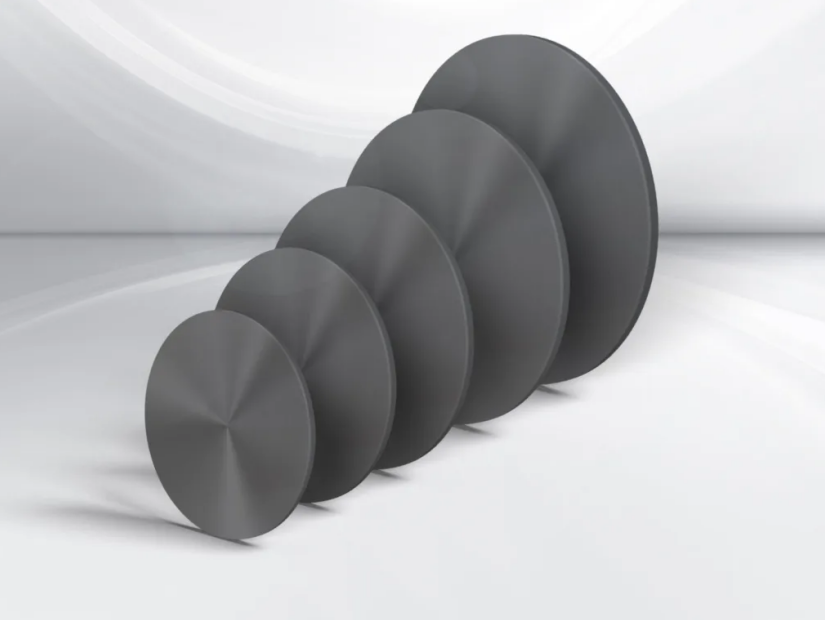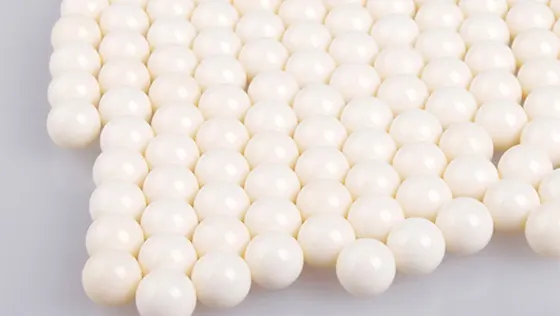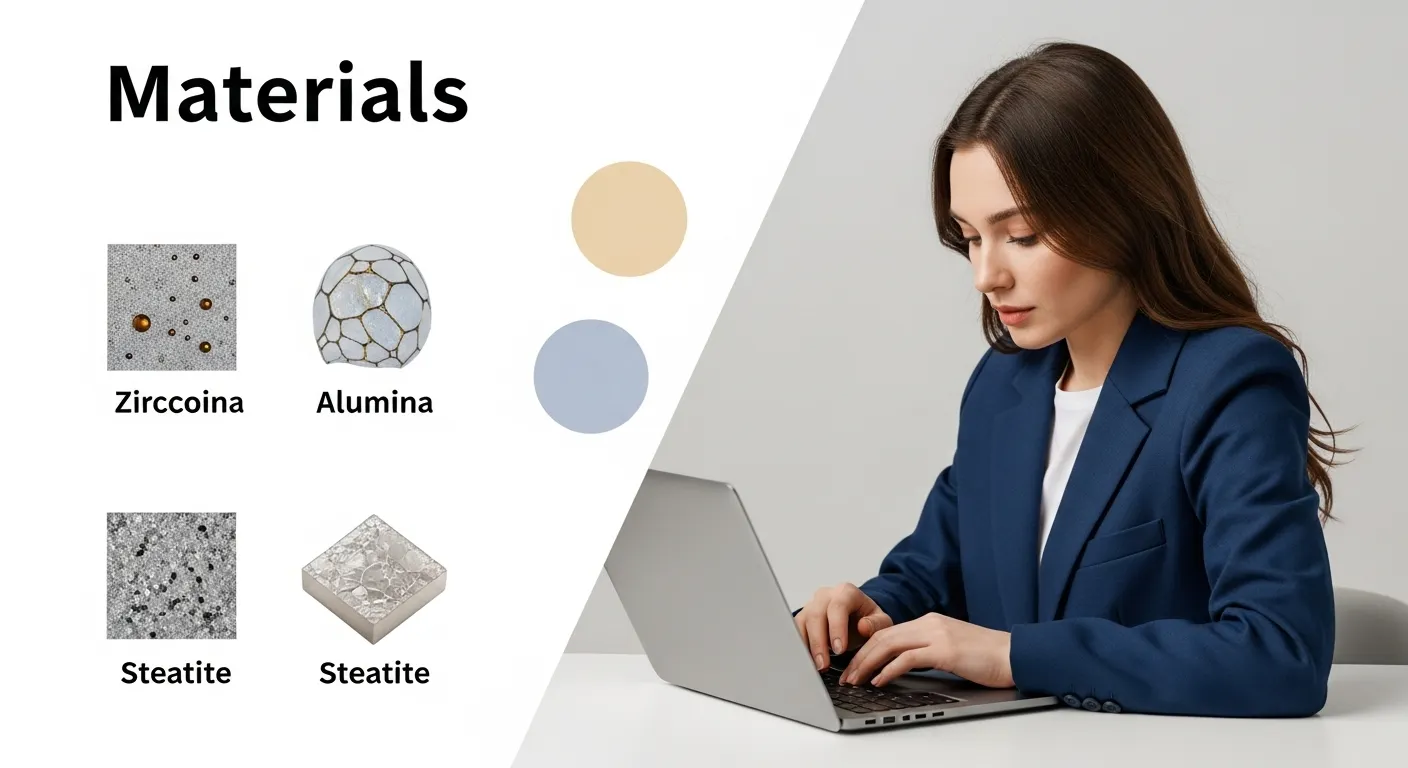High Precision Ceramic Ferrules: The Ultimate Guide
High precision ceramic ferrules are the single most critical component in the global fiber optic network. You cannot see them, but these tiny, engineered tubes are the unseen heroes inside every high-performance fiber optic connector. They perform a task of almost unimaginable precision: aligning the glass cores of two optical fibers, each just $8$ microns wide.
To put that in perspective, a human hair is over 70 microns thick. A red blood cell is $5$ microns. This component is responsible for aligning two fibers to a tolerance smaller than a bacterium.

This guide is a deep dive into the world of high-precision ceramic ferrules. We will explore what "precision" truly means, how it is manufactured, and why it is the non-negotiable factor that separates a blazing-fast 400G network from a dead connection. For engineers, network architects, and procurement managers, understanding this component is the key to understanding network performance.
What Defines a "High Precision" Ceramic Ferrule?
Not all ceramic ferrules are created equal. The term "high precision" specifically refers to ferrules designed for the most demanding applications, which is almost always single-mode fiber.
What makes a ceramic ferrule "high precision"?
A high-precision ceramic ferrule is defined by its sub-micron manufacturing tolerances. Its primary job is to align single-mode fiber cores, which are only $8-9\mu\text{m}$ wide. This requires the ferrule's inner hole to be centered with its outer diameter with an error (concentricity) of less than one micron.
The distinction is critical:
- Multimode Ferrules: Used for multimode fiber, which has a large $50\mu\text{m}$ or $62.5\mu\text{m}$ core. Alignment is much easier, and the precision requirements are lower.
- High Precision (Single-Mode) Ferrules: Used for single-mode fiber with its $8\mu\text{m}$ core. A 1-micron misalignment is a major failure. These ferrules are the focus of this guide.
The entire industry has standardized on one material for this task: Zirconia (Zirconium Oxide, or ZrO2). This advanced ceramic, often called "ceramic steel," is the only material that offers the perfect blend of properties:
- Extreme Hardness: It resists scratches and wear from repeated connections.
- Thermal Stability: Its thermal expansion coefficient is very close to that of glass. This is vital, as it ensures the ferrule and fiber expand and contract together, keeping the alignment stable as temperatures change.
- Micro-Structure: Its fine grain allows it to be polished to a mirror-smooth finish.
The Core Problem: Why Sub-Micron Precision Is Not Optional
The goal of a high-precision ferrule is to minimize two signal-destroying problems: Insertion Loss (IL) and Return Loss (RL).
Understanding Insertion Loss (IL)
What is Insertion Loss in fiber optics?
Insertion Loss (IL) is the reduction of signal strength, or light, that occurs when it passes through a connection. It is measured in decibels (dB). In a high-speed network, the goal is to have the lowest IL possible (e.g., less than $0.2\text{ dB}$).
High precision is the only way to fight IL. Loss at a connection is caused by three misalignment factors:
- Lateral (Offset) Misalignment: The cores are not centered. This is the main problem high-precision ferrules solve. A $1\mu\text{m}$ offset in a single-mode link can cause $0.5\text{ dB}$ of loss, which is a massive failure.
- Angular Misalignment: The fibers meet at a slight angle.
- End-Face Separation: The two fibers are not in "physical contact" and have a small air gap.
A high-precision ferrule with sub-micron tolerances all but eliminates these problems.
Understanding Return Loss (RL)
What is Return Loss in fiber optics?
Return Loss (RL) measures the amount of light that is reflected back toward the source (the laser) at a connection point. It is also measured in dB. A high RL value is good (e.g., $55\text{ dB}$), as it means very little light is being reflected.
Reflected light is poison to a network. It can corrupt data and even destroy the laser source. Return Loss is not just about alignment; it is about the quality of the polish on the ferrule's end-face.
This is where polish types come in:
- PC (Physical Contact): An older, flat polish. (RL $\approx -40\text{ dB}$)
- UPC (Ultra Physical Contact): A flat polish with a finer finish. (RL $\approx -55\text{ dB}$)
- APC (Angled Physical Contact): The ferrule is polished at a precise $8^\circ$ angle. This angle cleverly reflects light out of the fiber core. (RL $\geq -60\text{ dB}$)
Creating a perfect UPC polish or a precise $8^\circ$ APC angle is a high-precision manufacturing process in itself.
The Anatomy of Precision: Key Ferrule Specifications
When you source high-precision ceramic ferrules, you are not just buying a part. You are buying a set of guaranteed tolerances. Understanding your supplier's spec sheet is essential.
1. Outer Diameter (OD)
This is the diameter of the ferrule body. It must fit perfectly inside the connector housing and, more importantly, inside the alignment sleeve of an adapter.
- Standard Sizes:
- $\varnothing 2.5\text{ mm}$: For SC, FC, and ST connectors.
- $\varnothing 1.25\text{ mm}$: For LC and MU connectors (the standard for high-density data centers).
- Typical Tolerance: $\pm 0.0005\text{ mm}$ (or $\pm 0.5\text{ }\mu\text{m}$). This tight fit ensures the ferrule itself is perfectly centered within the adapter.
2. Inner Diameter (ID) / Bore
This is the tiny hole that holds the $\varnothing 125\mu\text{m}$ glass fiber (cladding).
- Standard Sizes:
- $\varnothing 125.5\text{ }\mu\text{m}$ (or $126\text{ }\mu\text{m}$): For single-mode fiber.
- Typical Tolerance: $+1\text{ }\mu\text{m} / -0\text{ }\mu\text{m}$.
- Why this tolerance? The hole must always be at least $125.5\mu\text{m}$ so the $125\mu\text{m}$ fiber can be inserted with adhesive. But it cannot be too large (e.g., $127\mu\text{m}$), or the fiber will be "off-center" within the hole, even if the hole itself is perfectly centered.
3. Concentricity (The Most Important Metric)
What is concentricity in a ceramic ferrule?
Concentricity is the measure of how "off-center" the inner bore is from the true center of the outer diameter. It is the single most critical specification for a high-precision ferrule. It is measured in microns ($\mu\text{m}$) and directly determines the amount of insertion loss a connector will have.
A "Grade A" or "Premium" ferrule is defined by its superior concentricity.
- Standard Grade: $\leq 1.0\text{ }\mu\text{m}$. This is the baseline for single-mode.
- Premium Grade: $\leq 0.7\text{ }\mu\text{m}$.
- Ultra-Premium Grade: $\leq 0.5\text{ }\mu\text{m}$ (sometimes as low as $0.3\text{ }\mu\text{m}$). These are required for the most demanding applications, like high-speed data center links, where every fraction of a dB matters.
When you pay for a high-precision ferrule, you are paying for the manufacturing skill and quality control needed to achieve this sub-micron concentricity.
4. End-Face Geometry
After a fiber is glued in, the ferrule tip is polished. High-precision manufacturing ensures the ferrule itself is prepared for a perfect polish. This 3D geometry is measured with a tool called an interferometer.
- Radius of Curvature (ROC): The end-face is not flat; it is a "dome." This dome shape ensures the fiber cores are the first point of contact. The ROC must be within a tight range (e.g., 10mm to 25mm).
- Apex Offset: This is the distance from the physical "peak" of the dome to the center of the fiber core. If the polish is off-center, the fibers will not meet at their highest point. The tolerance is tiny (e.g., $\leq 50\text{ }\mu\text{m}$).
- Fiber Height: This measures if the fiber is protruding from or sunken into the ferrule. The tolerance is measured in nanometers (e.g., $\pm 50\text{ nm}$).
How High Precision Ceramic Ferrules Are Made
Creating a component with $0.5\text{ }\mu\text{m}$ tolerances is one of the most difficult processes in manufacturing. It is a blend of material science, automation, and advanced machining.
Step 1: The Raw Material
The process begins with ultra-pure, nano-grade Yttria-Stabilized Zirconia (Y-TZP) powder. The quality of this initial powder is paramount. The world's top ferrule manufacturers often source this powder from specialist Japanese companies (like Tosoh) known for their consistency and purity.
Step 2: Ceramic Injection Molding (CIM)
The raw powder is mixed with a proprietary polymer binder to create a "feedstock." This material is then heated and injected under high pressure into a complex, multi-cavity mold. This creates the "green part," which is larger than the final ferrule and has the consistency of hard chalk.
Step 3: Sintering
This is the "magic" step, a core process of ceramic engineering.
- Debinding: The green parts are put in a low-temperature furnace to slowly burn away the polymer binder.
- Sintering: The parts are then heated to an extreme temperature (over $1400^\circ\text{C}$). The zirconia particles fuse, and the part shrinks by 20-25%, becoming incredibly hard and dense. This step is critical for material stability.
Step 4: Precision Diamond Machining
The sintered part is hard, but its dimensions are not yet precise. The final stage is a series of machining steps using diamond, the only material hard enough to cut zirconia.
- Outer Diameter (OD) Grinding: The ferrules are spun between two wheels in a "centerless grinder" to achieve the $\pm 0.5\text{ }\mu\text{m}$ tolerance.
- Inner Diameter (ID) Drilling: The capillary hole, which shrinks during sintering, is re-drilled and lapped to its final, precise $125.5\text{ }\mu\text{m}$ dimension.
- End-Face Grinding: The tip is ground and polished to prepare it for the final connector polish (PC, UPC, or APC).
Every step in this process must be perfect. A 1-second temperature variation in the furnace or a 1-micron wobble in the grinder can result in a part that fails inspection.
Quality Control: How Precision Is Measured and Verified
You cannot "eyeball" a micron. High-precision manufacturing requires a high-precision quality control lab. When you vet a supplier, you are also vetting their QC department.
How is ferrule precision measured?
Precision is measured with specialized metrology equipment. A supplier uses laser micrometers and CMMs to check dimensions, concentricity testers to measure bore offset, and interferometers to verify the 3D geometry of the polished end-face.
A top-tier supplier will use:
- Concentricity Testers: To verify the ID-to-OD offset.
- Video Inspection Systems: To automatically check for visual defects like cracks, chips, and stains.
- Interferometers: This is the key tool. It uses light to map the 3D surface of the ferrule end-face, verifying the Radius of Curvature, Apex Offset, and Fiber Height down to the nanometer.
When you place an order, you should demand a Certificate of Conformance (CoC). This document is the manufacturer's legal guarantee that the batch of ferrules you received meets the exact specifications (concentricity, ID/OD) you agreed upon.
Sourcing High Precision Ferrules: A Global Market
The market for high-precision ferrules is highly concentrated. Different regions specialize in different parts of the supply chain.
- Japan: The undisputed leader in raw materials (Zirconia powder) and ultra-premium, "zero-defect" ferrules.
- China: The world's largest manufacturer of high-precision ferrules. They dominate high-volume production for the global telecom and data center markets with exceptional quality and scale.
- USA: The market for ceramic ferrules in the USA is highly specialized, focusing on mil-spec, aerospace, medical, and R&D applications where custom designs and domestic traceability are key.
- Europe: Sourcing ceramic ferrules in Europe is common for industrial automation, high-power lasers, and sensor technology, where precision engineering is paramount.
- India & Southeast Asia: These are the fastest-growing consumer markets. Sourcing a ceramic ferrule supplier in India or Indonesia is a key strategy for supporting the massive local 5G and FTTH rollouts.
The Future of Precision: Beyond the Single Ferrule
The demand for precision is only increasing. As networks move to 800G, 1.6T, and beyond, the tolerances get even tighter.
- Tighter Tolerances: The market is already pushing for concentricity below $0.3\text{ }\mu\text{m}$ as a new standard.
- Multi-Fiber Ferrules (MT Ferrules): The new frontier. These are rectangular ferrules that hold 12, 16, or 24 fibers in a single component. The precision required to align all 24 fibers at once is an incredible engineering challenge.
- Co-Packaged Optics: The long-term future involves bringing optics directly onto the chip. This will require new types of micro-ferrules and alignment structures that are even smaller and more precise.
Conclusion: Precision Is Not a Feature; It Is the Function
A high-precision ceramic ferrule is a component where "good enough" is a recipe for failure. The difference between a $1.0\text{ }\mu\text{m}$ ferrule and a $0.5\text{ }\mu\text{m}$ ferrule is not just a number on a spec sheet; it is the difference between a network that struggles and one that performs flawlessly.
When you source this component, you are buying a manufacturer's commitment to quality, their investment in metrology, and their mastery of a deeply complex process. In the world of fiber optics, precision is the one thing you can never compromise on.
For a broader overview of all ferrule types, materials, and applications, please see our complete guide to ceramic ferrules.
In This Article
- 1 What Defines a "High Precision" Ceramic Ferrule?
- 2 The Core Problem: Why Sub-Micron Precision Is Not Optional
- 3 The Anatomy of Precision: Key Ferrule Specifications
- 4 How High Precision Ceramic Ferrules Are Made
- 5 Quality Control: How Precision Is Measured and Verified
- 6 Sourcing High Precision Ferrules: A Global Market
- 7 The Future of Precision: Beyond the Single Ferrule
- 8 Conclusion: Precision Is Not a Feature; It Is the Function
 English
English 中文
中文





